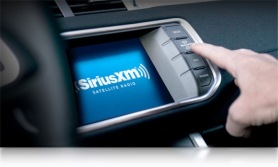
What would you do if you woke up one morning and saw this as the headline in all the radio trades? Have you ever considered the possibility of this happening? Well lots of people woke recently to this headline “Angie’s List is now free: What this means for your business.”
Call it a subscription, a membership fee or a paywall, what happens when they are eliminated? In Angie’s List’s case, less than one percent of Americans were members at the $40/month fee that had been in place. Paying that fee let people see the reviews of other members that had experienced certain businesses or services they had used. Now everyone can see those reviews. Angie’s List had developed a reputation for its members writing rather substantial reviews as well as being a website that is strong, trusted and contains valuable content.
Why Did Angie’s List Tear Down Their Paywall?
Angie’s list is a publicly traded company. Their stock is down seventy-five percent from three years ago. Management is under pressure. Tearing down their paywall means increased page views. When page views go up, revenue goes up. See the strategy?
Could SiriusXM Follow Suit?
Satellite radio currently captures about ten percent of radio listening and mostly in vehicles. The new digital dashboard entertainment centers will be a gateway to Pandora, Spotify, Apple, YouTube and more. Having an XM button on my Honda Accord, I know that my access can be selectively turned on or off by SiriusXM. When they do one of their free listen promotions, they don’t turn on all the channels, just the ones they think will hook me to listen. So, I would imagine, they could create a group of channels that could be on all the time and carry a limited commercial inventory attractive to national advertisers. Like the most popular musical venues, such as adult contemporary. Even if they only turned on the top five music formats, it would mean drivers could listen to them wherever they drove across America, plus SiriusXM would have the ability to pop in promos for their other channels that remained behind a paywall. It’s almost too scary to consider the possibility.
Teens Love Streaming
Teens love streaming audio and their smartphones. According to the Music Business Association and their data partner LOOP, teens spent 51% of their listening time on a typical day streaming their music versus only 12% of their time with AM/FM radio. This is a media usage habit being formed in the next generation. It not only affects traditional AM/FM broadcasters but satellite radio as well. This is a problem that needs to be addressed.
NextRadio App
Thanks to Jeff Smulyan and Emmis, the NextRadio App is the way FM broadcasters can get their audio into those smartphones, without running up a user’s data plan. However, Sprint has already removed many audio streaming services from running up their data plans by letting their customers listen as much as they want at no extra charge. Since teens avoid paying any fees whenever possible, free is always an attraction.
Less Than 1% of World Pays For Streaming Audio
AM/FM radio has been built on free. That’s an advantage that too often gets taken for granted. According to Nielsen 61% of people find out about new music via their AM/FM/satellite radio.
Price is the number one reason more people don’t pay for streaming audio. Out of a worldwide population of over seven billion people, about forty-one million buy some form of audio streaming; 0.58% of the world’s population. That percentage turns out to be lower than the total number of people who have a Netflix subscription around the planet.
23,870 AM/FM Radio Signals On-The-Air
The FCC just published their latest numbers for broadcast stations as of June 30, 2016. We are approaching 24,000 signals for radio in America. 19,194 of those signals are FM and 4,676 are AM. Plus we have two satellite radio signals, Sirius & XM, which are now under a single owner.
Pay & Free
It doesn’t take a whole lot of imagination to see satellite radio one day deciding to have the best of both worlds. Offer premium pay channels to those willing to pay for them and at the same time create a free tier of channels that could be ad supported by national advertisers.
What history shows us are things that happen in other industries and services eventually make their way around to virtually all of them. It’s only a matter of time.

 dio was born, no one had a clue how to make money with it. The early radio station operators made radio sets. They knew if they wanted to sell radio sets, they had to provide something for those radio sets to pickup and for the people who owned those radio sets, something entertaining to listen to.
dio was born, no one had a clue how to make money with it. The early radio station operators made radio sets. They knew if they wanted to sell radio sets, they had to provide something for those radio sets to pickup and for the people who owned those radio sets, something entertaining to listen to.